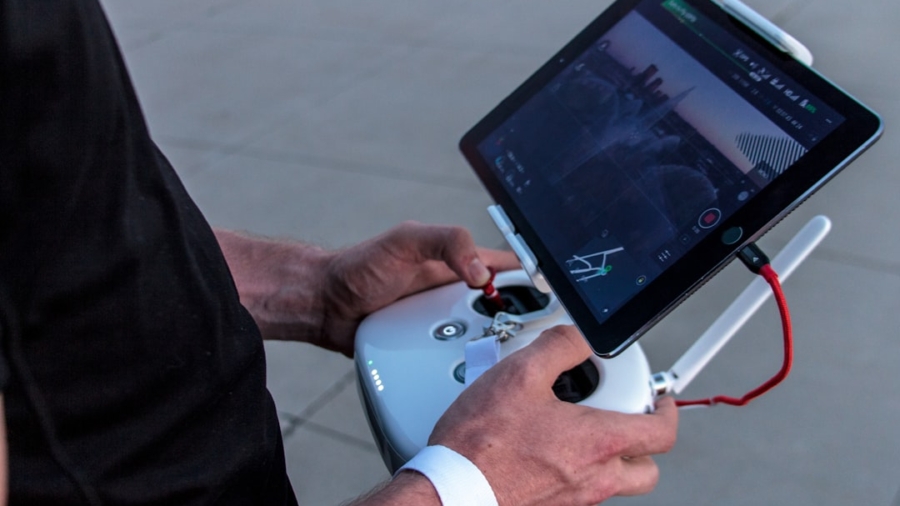The advent of autonomous ships and drones marks a significant milestone in the evolution of transportation and logistics. These unmanned vehicles, equipped with advanced technologies such as artificial intelligence, machine learning, and sophisticated sensors, are designed to operate independently, reducing the need for human intervention. Autonomous ships are revolutionizing maritime transport by enhancing efficiency, safety, and environmental sustainability.
Similarly, drones are transforming various sectors, including agriculture, delivery services, and surveillance, by providing rapid and cost-effective solutions to complex logistical challenges. The integration of autonomous technology into these vehicles is not merely a trend; it represents a paradigm shift in how goods and services are delivered. The potential for increased operational efficiency is immense, as these systems can optimize routes, reduce fuel consumption, and minimize human error.
However, the successful operation of autonomous ships and drones hinges on robust communication systems that facilitate real-time data exchange and decision-making. This is where wireless networks come into play, serving as the backbone for connectivity and operational coordination.
Key Takeaways
- Autonomous ships and drones are revolutionizing the transportation and logistics industry by eliminating the need for human intervention in operations.
- Wireless networks play a crucial role in enabling autonomous operations by providing real-time communication and data transfer between the vehicles and control centers.
- The use of wireless networks for autonomous ships and drones offers advantages such as increased efficiency, reduced operational costs, and improved safety through constant connectivity.
- However, challenges and limitations such as signal interference, limited coverage in remote areas, and potential cybersecurity threats need to be addressed for the successful implementation of wireless networks in autonomous operations.
- Ensuring the security and reliability of wireless networks is essential for the safe and efficient functioning of autonomous ships and drones, and future developments aim to enhance these aspects while also improving network performance.
The Role of Wireless Networks in Autonomous Operations
Wireless networks are critical to the functionality of autonomous ships and drones, enabling seamless communication between vehicles, control centers, and other stakeholders. These networks facilitate the transmission of vast amounts of data generated by onboard sensors and systems, allowing for real-time monitoring and decision-making. For instance, autonomous ships rely on wireless communication to share navigational data, weather updates, and operational status with shore-based control centers.
This connectivity ensures that vessels can adapt to changing conditions and make informed decisions without human intervention. Moreover, wireless networks support the integration of various technologies that enhance the capabilities of autonomous vehicles. For example, the use of Internet of Things (IoT) devices allows for continuous monitoring of environmental conditions and vessel performance.
Drones equipped with cameras and sensors can transmit high-definition video feeds back to operators in real-time, enabling immediate analysis and response. The ability to communicate effectively across vast distances is essential for the safe and efficient operation of these autonomous systems, particularly in remote or challenging environments where traditional communication methods may falter.
Advantages of Using Wireless Networks for Autonomous Ships and Drones
The advantages of employing wireless networks in autonomous operations are manifold. One of the most significant benefits is the enhancement of operational efficiency. Wireless communication allows for real-time data sharing, which can lead to optimized routing and scheduling.
For instance, an autonomous ship can receive updated weather forecasts or traffic information while en route, enabling it to adjust its course to avoid adverse conditions or congested shipping lanes. This adaptability not only saves time but also reduces fuel consumption and operational costs. Another advantage is the improved safety that wireless networks provide.
Autonomous ships and drones can communicate with each other and with shore-based systems to avoid collisions and navigate safely through complex environments. For example, in busy ports where multiple vessels operate simultaneously, wireless networks can facilitate coordination among ships to prevent accidents. Additionally, drones used for delivery services can communicate with each other to optimize flight paths and avoid obstacles, ensuring safe operations in urban areas.
Challenges and Limitations of Wireless Networks for Autonomous Operations
Despite the numerous advantages of wireless networks in autonomous operations, several challenges and limitations must be addressed. One significant concern is the reliability of wireless communication in various environments. Autonomous ships often operate in remote areas where signal strength may be weak or intermittent.
Similarly, drones flying in urban settings may encounter signal interference from buildings or other structures. These connectivity issues can hinder the performance of autonomous systems, potentially leading to operational failures or safety risks. Another challenge is the bandwidth limitations associated with wireless networks.
Autonomous vehicles generate vast amounts of data that need to be transmitted in real-time for effective decision-making. In scenarios where multiple vehicles are operating simultaneously or where high-resolution video feeds are being transmitted, existing wireless networks may struggle to handle the data load. This limitation can result in delays or loss of critical information, which could compromise the safety and efficiency of operations.
Security and Reliability of Wireless Networks for Autonomous Ships and Drones
The security of wireless networks is paramount when it comes to autonomous ships and drones. As these vehicles become increasingly reliant on connectivity for their operations, they also become more vulnerable to cyber threats. Malicious actors could potentially exploit weaknesses in wireless communication systems to gain unauthorized access to autonomous vehicles, leading to catastrophic consequences.
For instance, a cyberattack on an autonomous ship could result in loss of control over navigation systems or even cause collisions with other vessels. To mitigate these risks, robust security measures must be implemented within wireless networks used for autonomous operations. Encryption protocols can safeguard data transmission between vehicles and control centers, ensuring that sensitive information remains confidential.
Additionally, regular software updates and security patches are essential to protect against emerging threats.
Future Developments and Innovations in Wireless Networks for Autonomous Operations
Looking ahead, several developments and innovations are poised to enhance wireless networks for autonomous ships and drones significantly. One promising area is the advancement of 5G technology, which offers higher data transfer speeds, lower latency, and greater capacity compared to previous generations of wireless communication. The implementation of 5G networks could revolutionize the way autonomous vehicles operate by enabling real-time data exchange even in densely populated areas or remote locations.
Additionally, the integration of edge computing with wireless networks holds great potential for improving the performance of autonomous systems. By processing data closer to the source—such as on the vehicle itself—edge computing can reduce latency and alleviate bandwidth constraints associated with cloud-based processing. This capability would allow autonomous ships and drones to make quicker decisions based on real-time data analysis, enhancing their operational efficiency and safety.
Case Studies: Successful Implementation of Wireless Networks in Autonomous Ships and Drones
Several case studies illustrate the successful implementation of wireless networks in autonomous ships and drones across various industries. One notable example is the Yara Birkeland project in Norway, which aims to create the world’s first fully electric and autonomous container ship. The vessel utilizes advanced wireless communication systems to navigate autonomously while sharing data with shore-based control centers for monitoring and coordination.
This project highlights how wireless networks can facilitate safe and efficient maritime operations while reducing environmental impact. In the realm of drones, companies like Zipline have successfully leveraged wireless networks to deliver medical supplies in remote areas. Zipline’s drones operate autonomously while communicating with ground stations to receive real-time updates on weather conditions and delivery routes.
This innovative use of wireless technology has enabled timely medical deliveries in regions where traditional transportation methods are often unreliable or slow.
The Impact of Wireless Networks on the Future of Autonomous Operations
The impact of wireless networks on the future of autonomous operations cannot be overstated.
The ability to communicate seamlessly will enhance operational efficiency, improve safety standards, and enable innovative applications that were previously unimaginable.
As we move forward into an era dominated by automation and connectivity, addressing the challenges associated with wireless networks will be crucial for realizing the full potential of autonomous vehicles. By investing in robust security measures, expanding network capabilities, and embracing emerging technologies like 5G and edge computing, stakeholders can ensure that autonomous ships and drones operate safely and efficiently in an increasingly interconnected world. The future promises exciting developments that will redefine transportation logistics while paving the way for a more sustainable and efficient global economy.
In addition to the advancements in wireless networks supporting autonomous ships and drones, the use of smartwatches in the maritime industry is also gaining traction. The article The Best Smartwatch Apps of 2023 highlights how smartwatches can enhance communication, navigation, and safety for sailors and crew members. With the integration of innovative technology, such as smartwatch apps, the maritime industry is continuing to evolve and improve efficiency.
FAQs
What are autonomous ships and drones?
Autonomous ships and drones are vehicles that can operate without direct human control. They are equipped with sensors, GPS, and other technology to navigate and make decisions on their own.
How do wireless networks support autonomous ships and drones?
Wireless networks provide the communication infrastructure for autonomous ships and drones to send and receive data, including navigation information, weather updates, and commands from control centers.
What role do 5G networks play in supporting autonomous ships and drones?
5G networks offer high-speed, low-latency communication, which is essential for real-time control and decision-making in autonomous systems. This enables faster and more reliable data transmission for autonomous ships and drones.
What are the benefits of using wireless networks for autonomous ships and drones?
Using wireless networks allows autonomous ships and drones to operate over long distances, access real-time data, and communicate with control centers and other vehicles, enhancing their safety and efficiency.
What are the challenges of using wireless networks for autonomous ships and drones?
Challenges include ensuring reliable connectivity in remote or harsh environments, protecting against cyber threats, and managing the increasing demand for wireless bandwidth as more autonomous vehicles come into operation.



